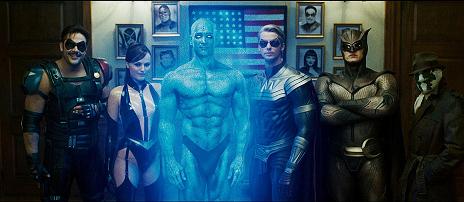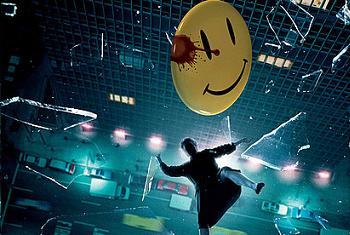As I write these words, “Watchmen” has just landed into movie theaters, but there’s already a sense that it’s yet another misunderstood film, with some finding it too long and not action-packed enough while others think it’s just another fanboy flick. Both sides are wrong, and I don’t think that can be argued.
On the one hand, measuring “Watchmen” up against the expectations one would have for a regular Hollywood blockbuster is wrongheaded, as this film and the Alan Moore-Dave Gibbons comic book series which it’s adapted from are clearly more interested in mythology, philosophy and genre deconstruction than in cheap thrills.
And on the other, you’d just have to be one hell of a contemptuous snob not to realize that this is way more inspired, complex and daring than your average superhero picture. By itself, the opening credits sequence, which brilliantly positions the various characters amongst 20th century icons such as JFK, Neil Armstrong, Leonid Brezhnev, Fidel Castro, Andy Warhol, Truman Capote, Neil Armstrong, Mick Jagger, David Bowie and the Village People (!), is richer than most Oscar-bait films. In many ways, “Watchmen” has more in common with “Forrest Gump” than with the “X-Men”.
Still, Moore and Gibbons’ work was very much about playing with comic book archetypes, in a way that had never really been done to that extent at that point. Dr. Manhattan (Billy Crudup)’s origin story seems inspired by Hulk’s, but his character arc has more to do with the concept of Superman as an alien god with no real connection to mankind. The Comedian (Jeffrey Dean Morgan) shares some traits with Wolverine (the attitude, the cigar, the black-ops background), but his bad-boy persona goes much further: rape and war crimes, for instance. Likewise, Rorsarch (Jackie Earle Haley) is not unlike the Punisher, except that I don’t remember the Marvel Comics antihero ever coming off like such a sadistic sociopath!

The same goes for Nite Owl (Patrick Wilson), who’s a Batman-style vigilante who’s literally impotent without his costume and his gadgets; Silk Spectre (Malin Akerman), who’s openly depicted like the fetish latex queen that so many female superheroes seem to be; and Ozymandias (Matthew Goode), who’s sort of like Tony Stark or Reed Richards if their extreme wealth and intelligence made them totally… Well, in case you haven’t read the comics, I won’t spoil what he’s up to here.
In the same spirit as Moore and Gibbons, director Zack Snyder has built tons of Pop Art homages into his film. After a single viewing, I’ve spotted direct nods to “Apocalypse Now”, “Taxi Driver” and “Dr. Strangelove”, and I’m sure there’s more in there. He’s also having a lot of fun with instantly recognizable music cues (which brings us back to the “Forrest Gump” comparison), throwing in songs from Nat King Cole, Bob Dylan, Simon & Garfunkel, Janis Joplin, KC & The Sunshine Band, Nena, Leonard Cohen, Tears for Fears, Jimi Hendrix… And yes, Snyder goes back to that “300”-style of hyperkinetic, post-“Matrix”, speed ramping action sequences which, granted, will indeed give fanboys “cheap” thrills.
But again, “Watchmen” is about so much more, as I’ve tried to imply without giving away too much above. Now, is it somewhat unfortunate that a true visionary like Darren Aronofsky didn’t end up directing the film? Sure, just as “Sin City” would have been even better if Quentin Tarantino had directed all of it. But like Robert Rodriguez, Zack Snyder might not be the most soulful of filmmakers, but he sure knows how to deliver awesome visuals and not get in the way of powerful source material.

